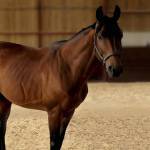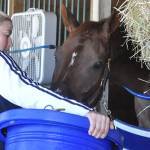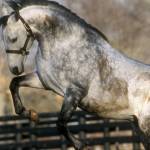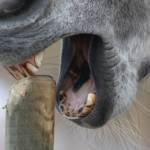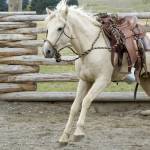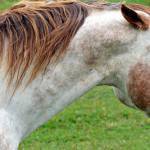Vitamin E Levels Stable in Hospitalized Horses, Though Deficiency Still a Concern
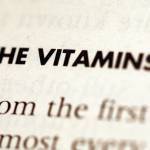
Studies in humans show that vitamin E levels decrease during hospitalization. That same trend was not observed in a recent study conducted on hospitalized horses; however, a surprisingly high rate of vitamin E deficiency at the time of hospital admission was observed.* Routine testing of vitamin E levels in all horses may be beneficial.
“Vitamin E is an essential fat-soluble nutrient that acts as an antioxidant and free radical scavenger. Horses primarily obtain vitamin E from fresh green grass, but once the grass is dried and harvested for hay, vitamin E content decreases significantly. Outside of forage, vitamin E sources include commercial feeds and supplements,” said Catherine Whitehouse, M.S., a nutrition advisor for Kentucky Equine Research.
In a hospital setting, patients with ongoing oxidative damage and increased metabolic consumption of vitamin E, as well as potentially decreased feed consumption, may have a decrease in vitamin E levels. This may be especially true for horses ingesting inadequate levels of forage or fresh grass during hospitalization. Diseases characterized by oxidative stress include colic, colitis, inflammatory bowel disease, and pituitary pars intermedia dysfunction.
In this study, vitamin E levels were measured at the time of admission in sick and healthy (admitted as companions) horses and foals and again at time of discharge, if hospitalized for at least five days. None of the horses received a vitamin E supplement 30 days prior to admission.
Vitamin E levels were obtained in 103 adult horses and 54 foals. Vitamin E deficiency was identified in 17 adults (16.5%) and 3 foals (5.5%) at time of admission. Forty adult horses and 20 foals were hospitalized for a minimum of five days. Follow-up vitamin E levels revealed that 7% of adult horses and no foals were deficient at discharge.
“Further, duration of hospitalization did not significantly affect vitamin E levels, despite the fact these horses do not typically have access to grass during this period,” relayed Whitehouse.
These data show that vitamin E deficiency is prevalent, warranting routine (annual) measurement of vitamin E levels even in apparently healthy horses and foals.
“Routine measurement of vitamin E and subsequent supplementation is necessary if there is a clinical suspicion of deficiency, concern for ongoing oxidative damage, known poor-quality hay, or lack of exposure to adequate pasture grazing,” wrote the research team.
According to Whitehouse, vitamin E levels can increase as rapidly as two to three days after starting supplementation. The most bioavailable source (i.e., greatest absorption) is natural vitamin E, in a water-dispersible form, such as Nano-E.
Nano-E utilizes innovative technology to encapsulate vitamin E in nanoparticles that enhance its absorption and increases vitamin E levels in the blood.
Ensuring adequate vitamin E levels, particularly early in life, is important as deficiency has been linked to neuroaxonal dystrophy/equine degenerative myeloencephalopathy (eNAD), equine motor neuron disease, and vitamin E-responsive myelopathy.
*Palmisano, M.G., S.F. Colmer, Y.L. Saw, X. Xu, D. Stefanovski, L. Murphy, and A.L. Johnson. 2025. Vitamin E concentrations in hospitalized adult horses and foals. Journal of the American Veterinary Medical Association 31(1-8).

